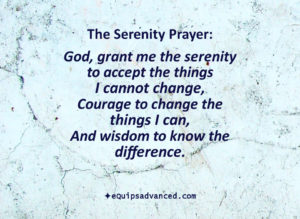“Think outside the box!” we say to each other cheerfully, whenever there is pressure to innovate. The advanced players will quip back: “Which box?”
Think outside the box indeed. Fresh ideas come from challenging the status quo. If we keep doing things the same way, we should expect the same results. We need to think outside the box to change outcomes or improve a situation.
Of course ‘the box’ is a figure of speech. When we are literally boxed in, our freedom of movement is restricted. Thinking outside the box means testing the supposed limits of our activity.
There is no point in arguing that there is no box. – ‘The Box’ is a tool for thinking about practical constraints. It’s that simple. Because there are, in fact, always limits to our activity. So there are limits to our ability to change a situation. Or at least in the way we take on such change. These limits may be physical, monetary, legal, ethical, and so on. But respecting such limits is where productive work begins.
Find creative ways to work within real constraints. Disregard or leverage imagined ones. This is how we gain advantage over our competitors. This is how a notion like thinking outside the box gets its teeth.
The Box You’re Thinking of Is Not the Box You’re In
Here’s the problem: the so called box we’re supposed to be thinking outside of is almost never the box we are actually in! Grasping this is vital. Wrestling with the tension of it is the essence effective problem solving.

A now famous experiment, called “Duncker’s Candle Problem,” illustrates the principle. Test subjects are given a problem to solve. But they must solve the problem within constraints. They must mount a candle on a wall using only the materials provided (the candle itself, a book of matches and a box of tacks). – How participants work with these materials is, if you will, the box they are challenged to think outside of. The fact that they have only those materials to work with is the box they are in.
We’re talking about distinguishing a challenge we are facing from the scope of our ability to tackle it. It is playing the cards you got dealt. It is playing them well because you know the rules and embrace the logic of the game.
How do you pack for a 2 – 3 week trip to Europe, using only carry-on luggage?
How do you double production without overtime or increased staff, while preventing injuries?
How do you ensure your talents shine, while maintaining a ‘balance’ of work and life that energizes you?
As you have no doubt guessed, it doesn’t matter where the constraints originate. Whether they are self-imposed (e.g., staying within budget) or inherent (e.g., height, weight, strength), the strategy is the same. Recognize the box you are in and think outside the box or boxes you are at liberty to exploit.
BONUS: For a cool example of innovating within constraints watch this video!
So, Which Box?
The trick, of course, is to know the difference. When you don’t know which constraints are valid you have to question and test them:
Is that customer requirement negotiable?
Is that policy still valid?
How much money are we able to spend?
Are there less expensive alternatives with the same level of quality?
How much weight will this thing hold?
Thinking outside the box is the willingness to explore and challenge boundaries. It amounts to playing by the rules that matter and playing with the rules that don’t.
But failure to delimit the box we are actually in will cause confusion. Work teams can become demoralized if some boundaries aren’t defined in advance. After all, the sky is not the limit. Nor should it be. As professionals, we have a right to well-articulated parameters for action. As leaders, as innovators, we have an obligation to provide as much.
In a previous essay I wrote about the importance of seeking clarity first, when taking on any problem. You can read about that here. The next step is to consider the constraints under which we will tackle the problem. In the language of project management, this is defining what is “In-Scope” or “Out-of-Scope.”
You want to focus your energy on the practical things you must do to improve a situation. Limits are only obstacles. You hurdle them. You negotiate them. You dismiss them. You transform them. But you get past them. It is the Serenity Prayer in action:

The next time someone says “think outside the box!” ask the necessary qualifier: “which box?” Seek clarity around the problem at hand and investigate your scope for action. With that, greater than half your battle is already won!

Your comments and feedback are important! Please see the Table-13 Code of Conduct before leaving a reply. All comments are moderated.
Superb!
Thank you. Glad you liked it!
Another great thought- stirring feature, that I can apply and will prove helpful at work and at home. Thank you!
I appreciate your comment, Tim! I’m happy to hear you found the essay helpful.